Early in 2023 a new family moved into the house across the street from me. When they moved in my wife and I did the neighborly thing and went across the street to introduce ourselves. As it turned out they were a wonderful and down-to-earth couple nearly the same age as us, and one of them, Christian, was an avid analog photographer who specialized in documentary-style street photography.
Well over the months we got to chatting and hanging out and several weeks ago he let me in on his first ever gallery exhibition that would be taking place in an industrial building just south of the historic Garfield neighborhood in downtown Phoenix. I will of course direct you to his website for the full story of his project at the end of this post, but the gist of it is that he managed to get in with one of the oldest low-rider clubs in Phoenix as a part of his ever-ongoing project to record Arizona culture. He snapped some photos at the first meeting and won their favor enough to be invited back on a ride-along. In his words, he eventually realized that the culture of this club and the artistry and pride that surrounded the cars was “something worth documenting” and over time he created enough material to put on a proper exhibition. The club partnered with him and another photographer to orchestrate a really unique car show/photography exhibit that included food, an in-person screen printing booth, and a local merchant booth selling rolls of film out of a display fridge.
This show was being put on in part by Wilson Camera which is a Phoenix staple for all things film photography. I knew the event was going to be packed with other photographers and being a photographer myself, albeit of a lesser caliber, I knew I would be bringing a camera as well. I have shot my fair share of Cinestill 400D in 35mm format but I had actually never gotten around to trying their 800 ISO film. I simply don’t do a whole lot of shooting indoors and this is a tungsten-balanced film that I never felt would be worthwhile to shoot outdoors in daylight. Interestingly, Cinestill actually recommends shooting this film at ISO 400 in daylight with a warming filter. That sounds like a fun experiment for another time. I had one roll of 800T in my fridge that I bought awhile back on a whim, so I loaded it into my ever-handy Minolta XD11 and mounted my excellent 50mm f/1.4 MD Rokkor-X. I proceeded to shoot the entire roll in the span of about an hour and a half. All the photos here were digitized using my GFX50S II with an adapted nikon macro lens, and inverted using Negative Lab Pro with the “Cinestill” preset.
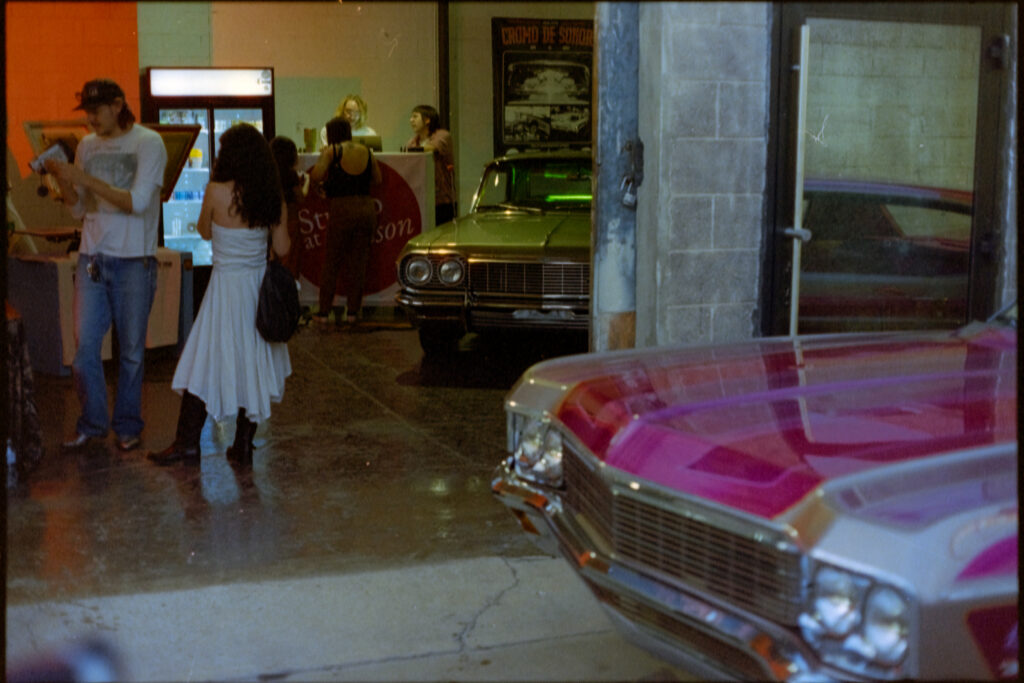
Stepping into the exhibit which was set up in an old disused mechanic shop. On the back wall is the name of the exhibit: Cromo de Sonora
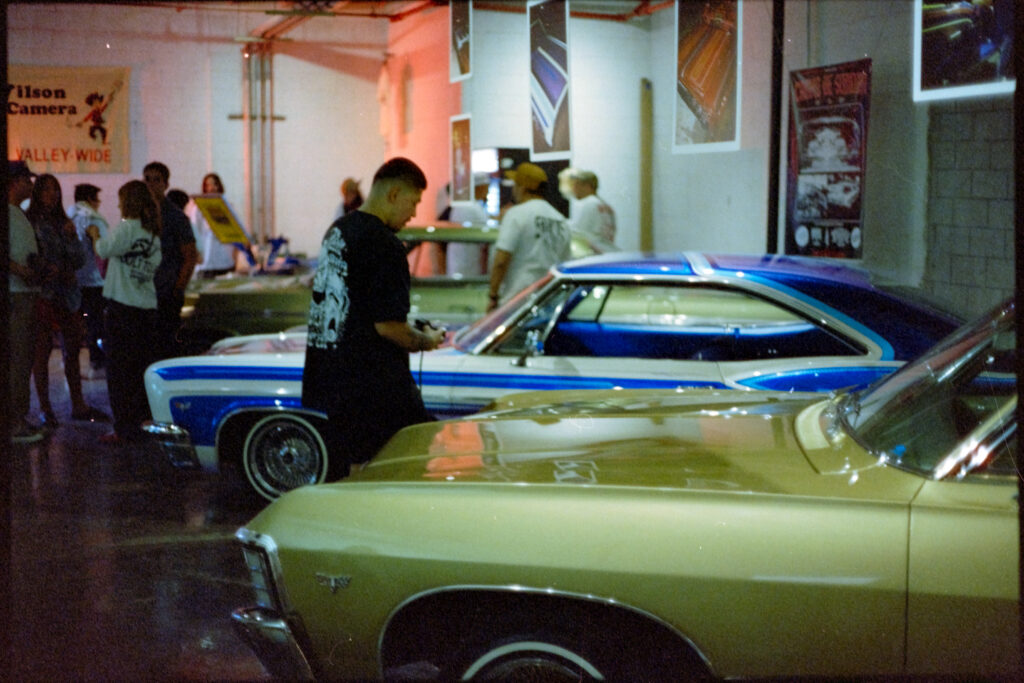
Almost every other person I saw that evening had a camera in their hands and most were shooting film. It’s nice to see film photography so alive and well in my city. This event was an interesting melding of the analog photography scene and low rider car culture. It was an excellent evening for people like me who love car spotting and camera spotting. I saw a couple of photographers shooting GS645’s, several Leicas of various vintage, a couple of Mamiya 645’s, lots of manual SLRs of all shapes and sizes, and I even saw one woman lugging a Fujifilm GFX100. I would have loved to see her photos from the evening.
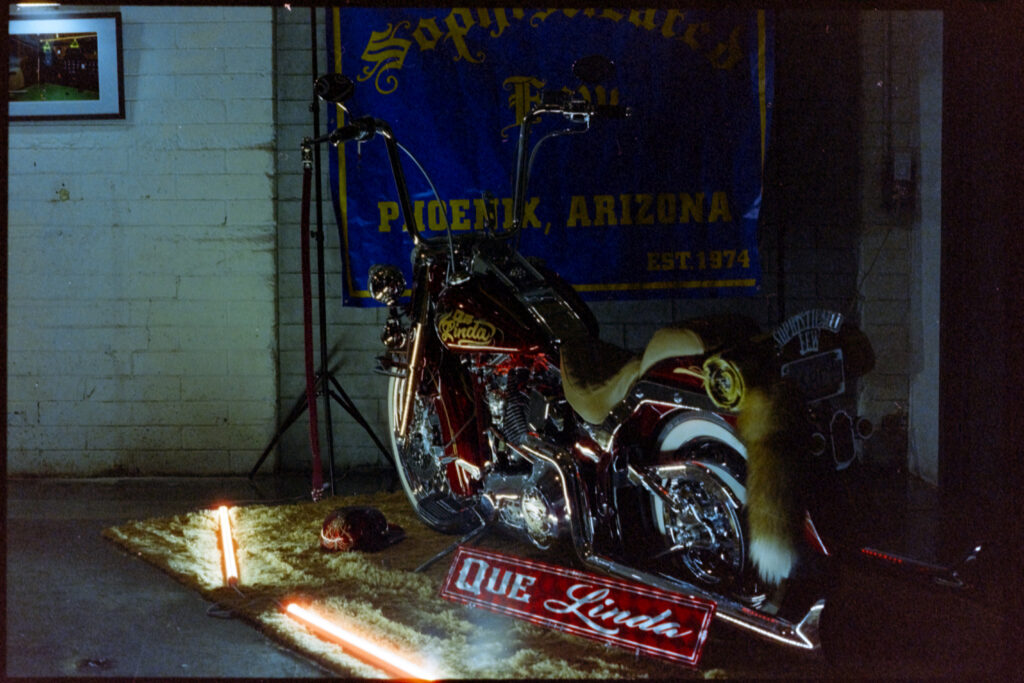
“Que Linda” I really love the rendering of the cathode tube lights on Cinestill. This dramatic red halation is sort of the hallmark of this film stock and this was the best example of it I had on the roll. The banner on the wall is the name of the low rider club, Sophisticated Few, which was the subject of the photography on display at the exhibition.
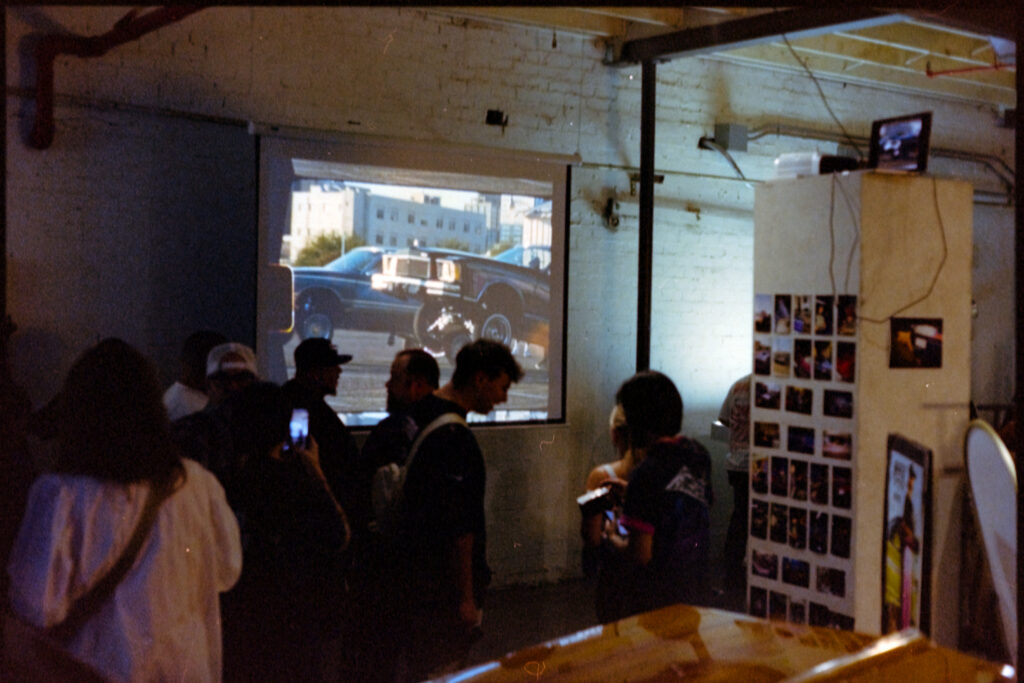
As the sun went down the super-fast max aperture of my lens really came in handy. Focusing manually in the dark at f/1.4 is really challenging but I am glad I at least got the projector screen in focus here. The projector was playing a looped video shot on Super-8 film by another photographer. Several “b-roll” type shots of driving through the streets of Phoenix and at parking lot meetups were put together to make this loop. I waited for the video to get to this shot of the cars bouncing on their hydraulic suspension before I took my photo. The car in the foreground in the video was at the event that night, but sadly it was parked inside a crowded gallery space and there was no hopping to witness. It’s actually pretty fascinating, the amount of custom fabrication and engineering that goes into these cars to allow them to “dance” and withstand the repeated forces of being dropped on the front end like this. Go lift the front end of your car 8 feet in the air with a forklift and drop it on the ground, I guarantee it would be totaled…
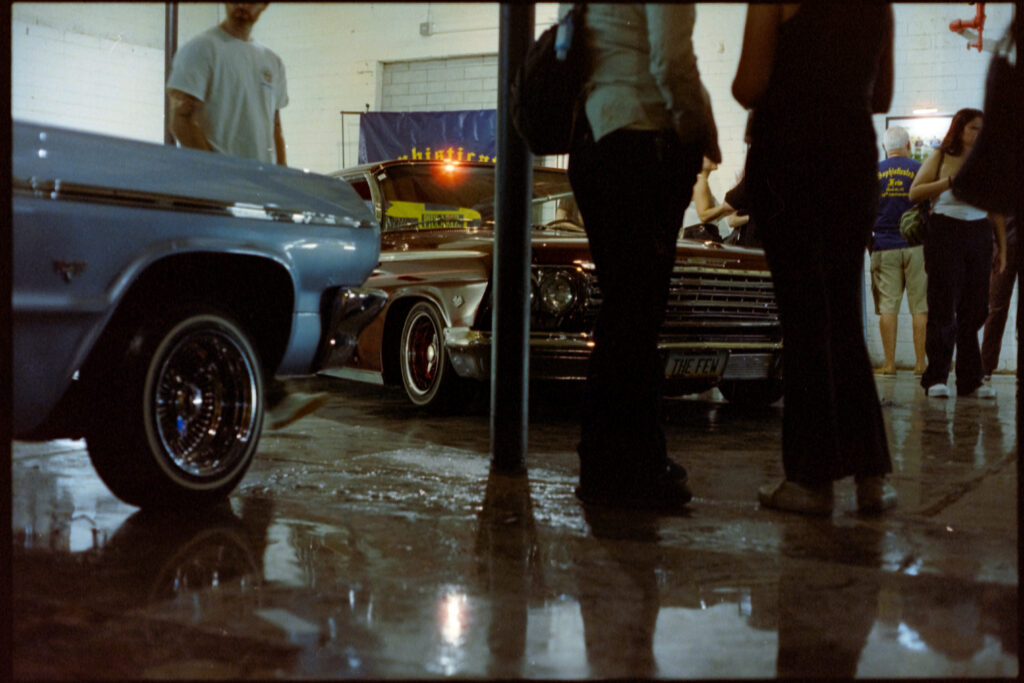
I really like this shot, with the blue car sort of leading in to the detail of the wheel and body chrome on the other car, and the pole with the two sets of legs framing “THE FEW” which is a shortening of the club’s name. The low angle brings you down to the level of these incredibly short cars and I think shows off their styling better. This photo is a great example of the beautifully fine grain of this wonderful and popular film and the clean detail you can achieve with it.
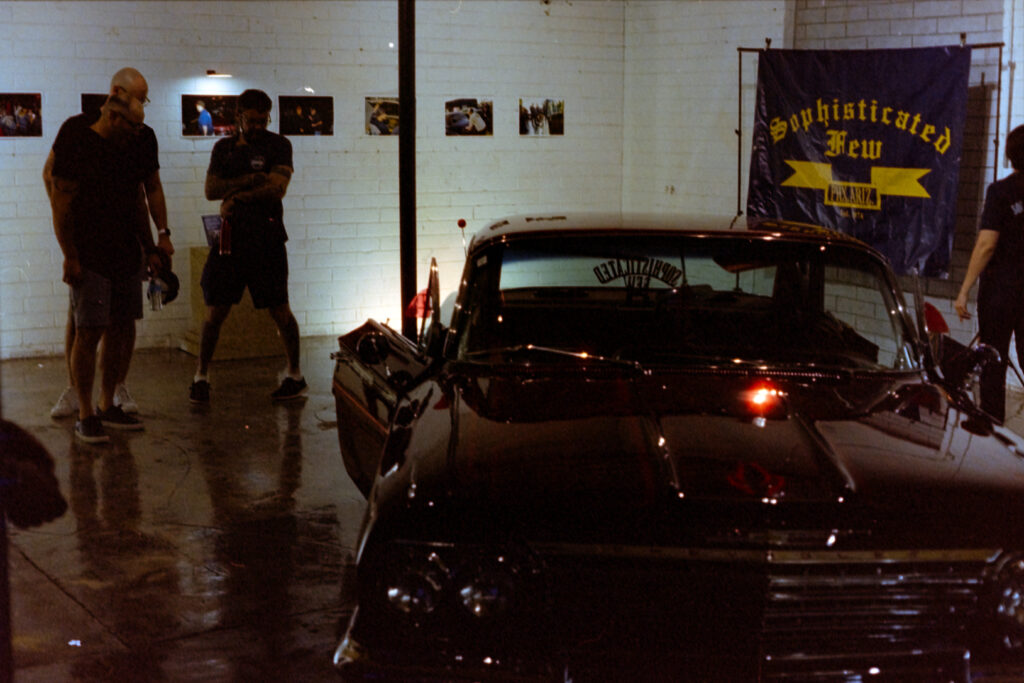
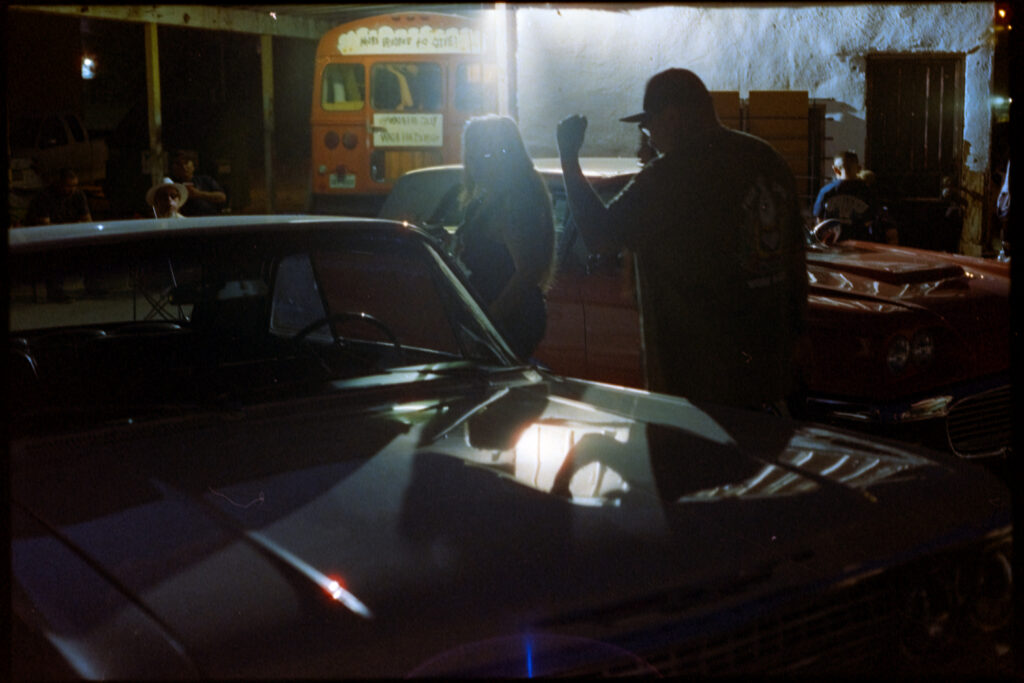
Outside there was a pop-up shop inside an old school bus which was selling some shirts and other merch. This shot was one of those pleasant surprises on the roll that weren’t expected. I actually don’t remember snapping this one but I like the movement created by the spot light just out of frame with the raised arm reflected on the car’s hood.
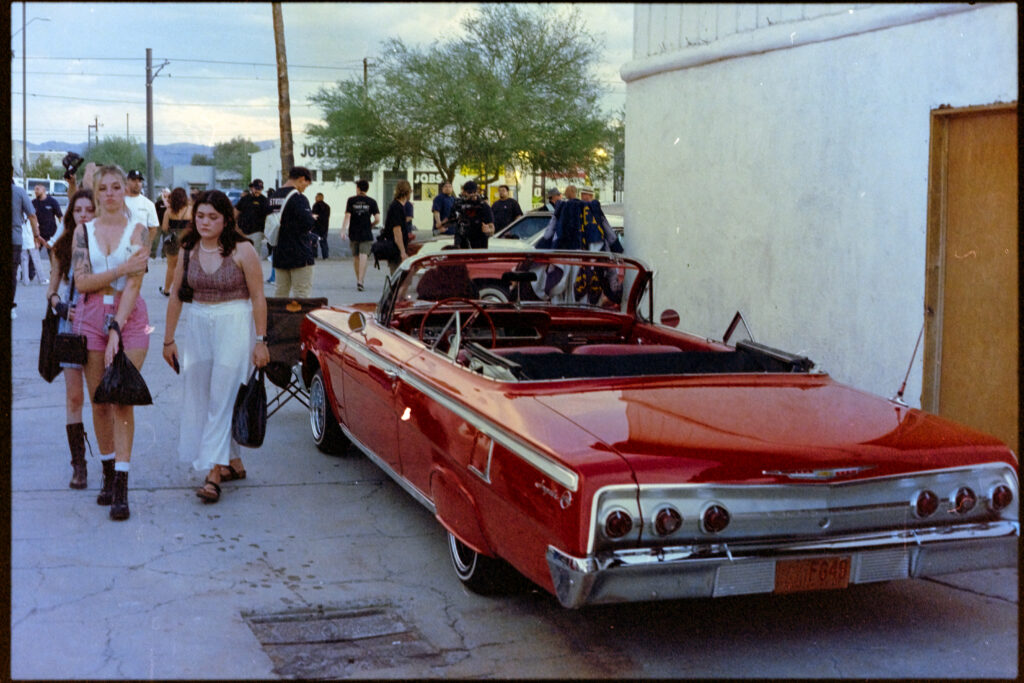
One of the first frames from the roll that was taken when the sun was still up. This photo shows two characteristics of this film: the cool blue color temperature and the extreme light sensitivity which I believe caused some discoloration in this frame due to “light piping.” You can tell the center of the image appears a little bit greener and lighter than the periphery. Light piping is a phenomenon that can occur in highly sensitive films when the leader is exposed to light during loading, and the film base can actually act as a fiber optic conduit and produce artifacts on the first several frames that resemble light leaks. I am not certain if that is what caused this discoloration here but the facts that this film is known to be susceptible to light piping and that this is one of the first frames support my theory.
This evening felt a lot like an informal photography meet-up disguised as a gallery show mixed with a car show. I had seen many of the images Christian displayed at the show before, having been previously shown them on his phone. There is something about seeing a photograph printed and hung in a gallery that just makes it look so much more impactful. From the standpoint of my own photography that evening, I tried to focus on the event itself rather than any particular detail. It was touching to see so many people come out in support of my neighbor’s art and I wanted to document that feeling for myself. I found him mingling before I left to go home, we chatted for a little bit and I remember quipping to him that I couldn’t recall the last time I burned through 36 exposures in such a short time.
After seeing these photos developed and inverted I was impressed enough to buy two more rolls of Cinestill 800T. I have read on other blogs that this film performs much better in the shadows and in grain size when rated at ISO 640 and processed normally. I am excited to try that with my next roll.
I’ll leave you with a link to his website: https://filmisdead.studio/
My own Instagram page: https://www.instagram.com/samforrest.photo
And my website: https://www.samforrestphoto.com/
Share this post:
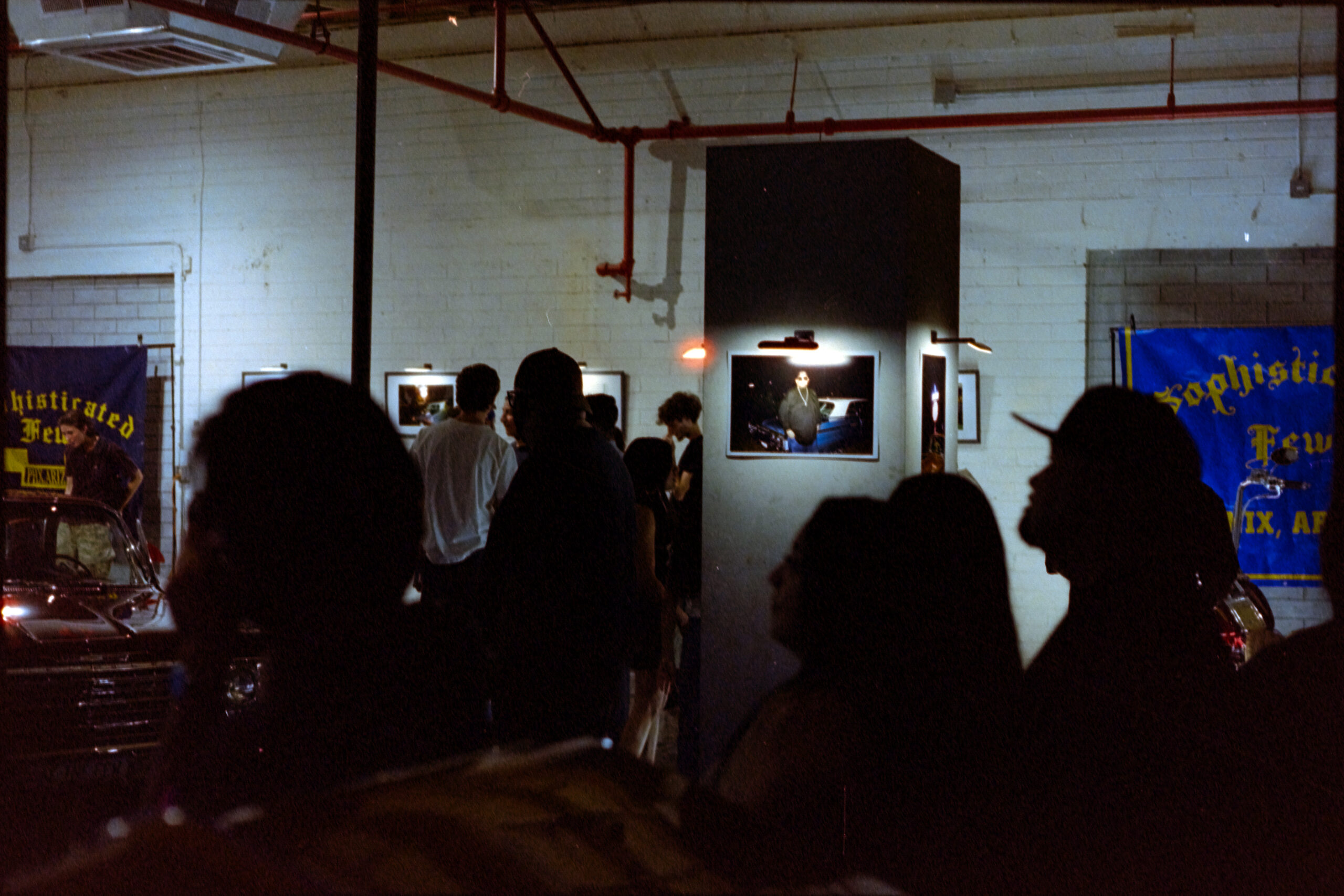
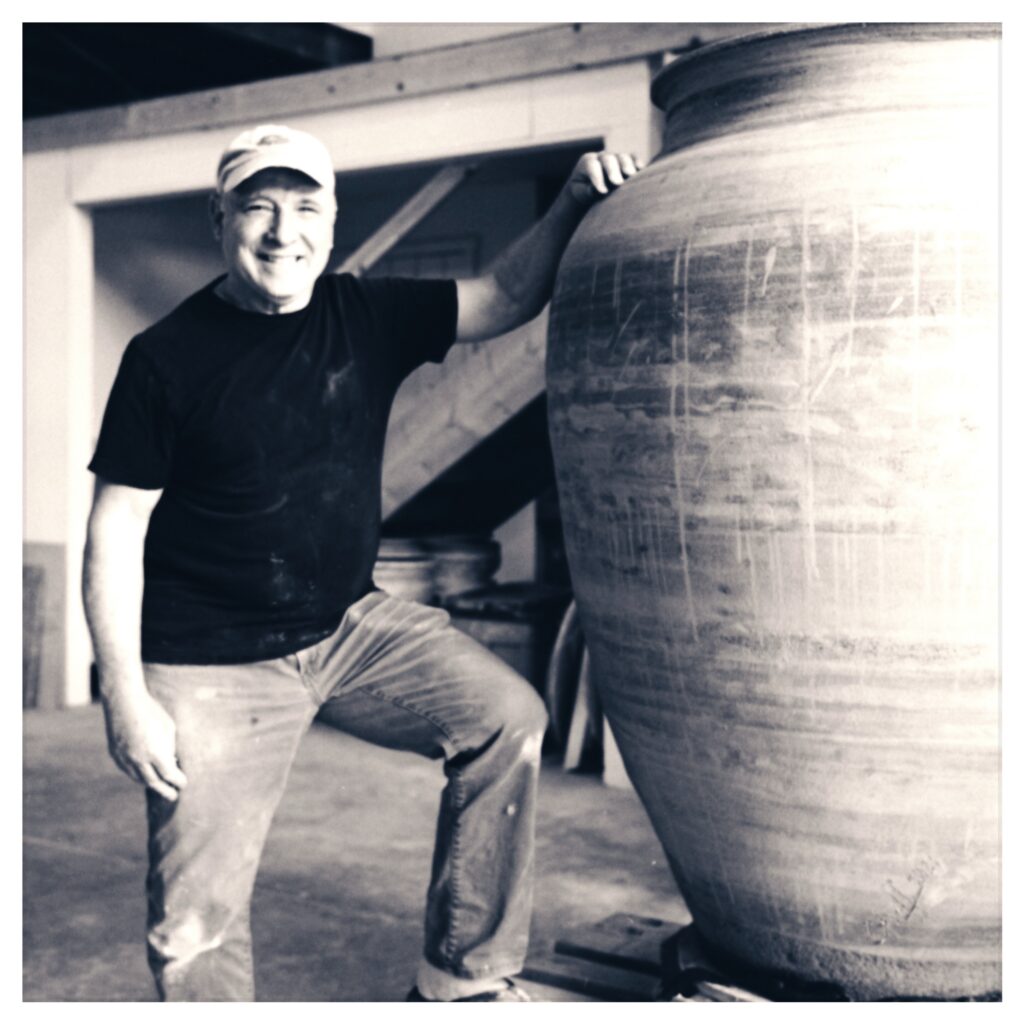
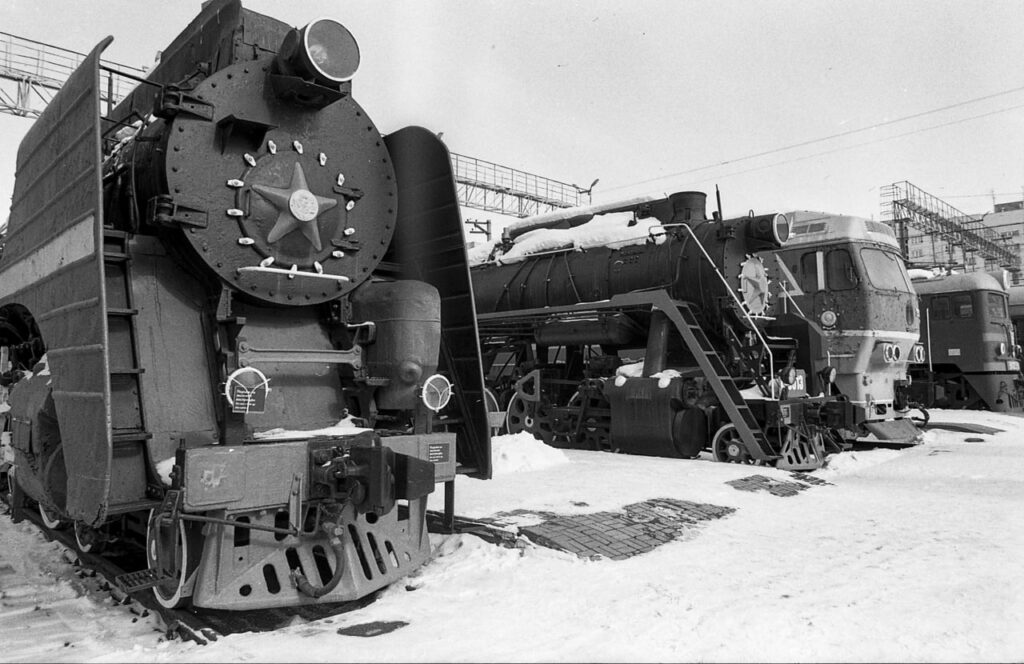
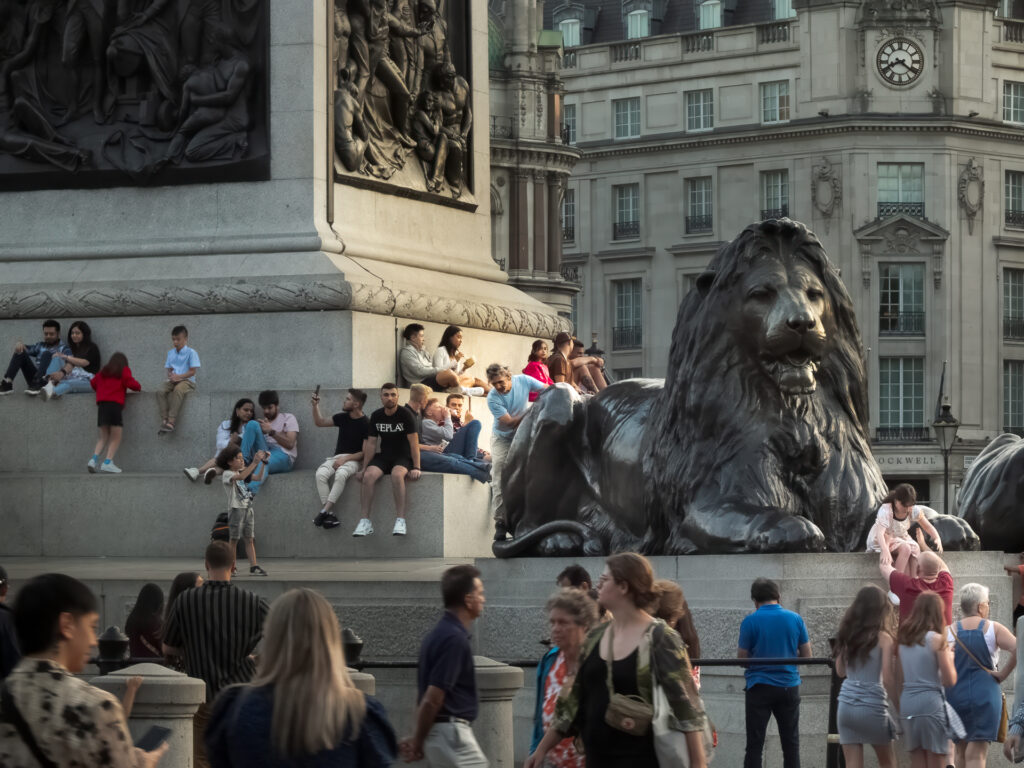
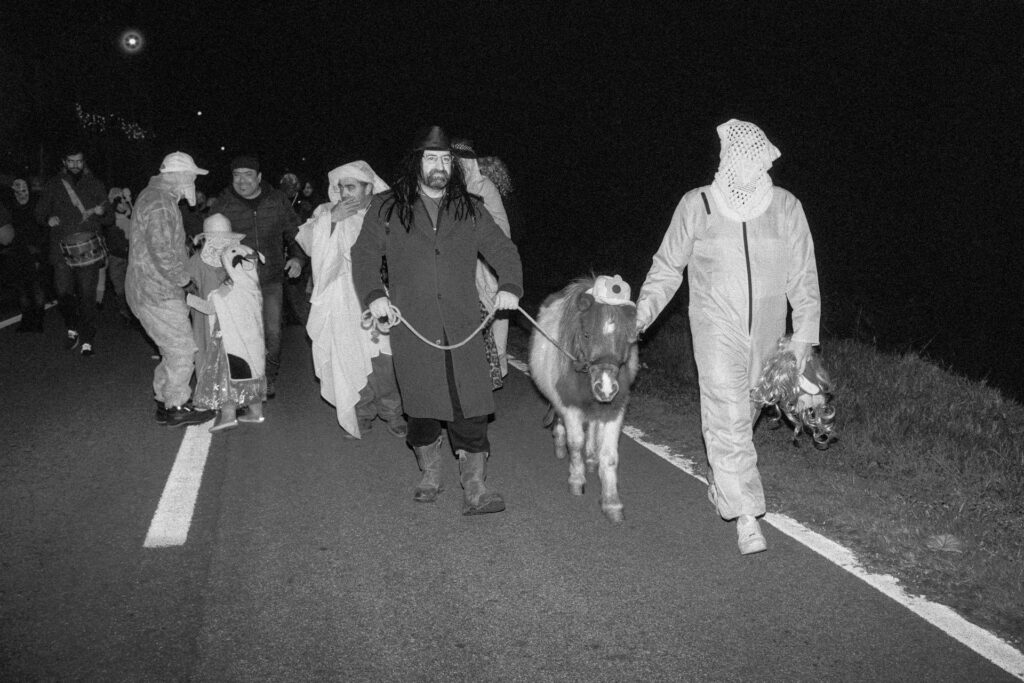




Comments
No comments found